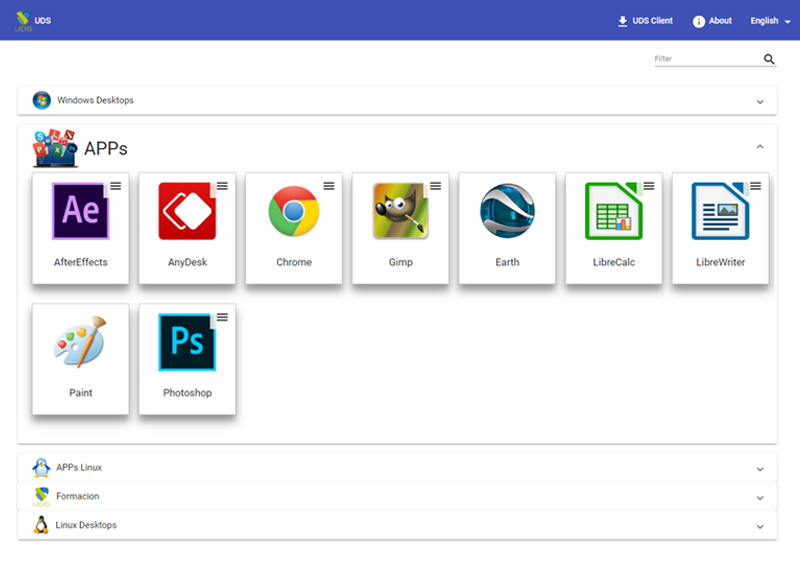Example of Windows virtual vApp available on the UDS Enterprise user panel
With UDS Enterprise, the deployment and administration of Windows virtual vApp are performed through Microsoft Remote Desktop Services (RDS). Users who are granted access can use them from any device, whatever their operating system.
Before starting the deployment, it is recommended to design and size the infrastructure according to each user group’s requirements. It is crucial to get the performance they need and their productivity and efficiency to be boosted.
All the necessary elements are indicated in the document, and the different configurations to be carried out on the application server(s), which may be physical and/or virtual, are detailed with screenshots.
The actions that administrators must perform in the UDS Enterprise administration are also specified. The manual is completed with an illustrative access example, which shows the different methods that can be enabled for users to enter the service. You can choose between a direct connection (for LAN) or tunneled (for LAN or WAN). The latter can be done through RDS or a web browser with HTML5.
The manual is available for consultation and download in the Documentation section on our website: Windows application
virtualization with
UDS Enterprise 3.0.
Suppose, instead of virtual Windows applications, you are interested in virtualizing Linux vApp. In that case, there is another guide that describes the entire configuration, deployment, and access process: Linux application virtualization with UDS Enterprise 3.0.
The UDS Enterprise connection broker offers the freedom to create a platform tailored to each client, combining Windows and Linux VDI and vApp, as well as remote access to physical and virtual devices in the way that best suits each project.
For any questions related to this software, you can contact our team through [email protected].








0 Comments